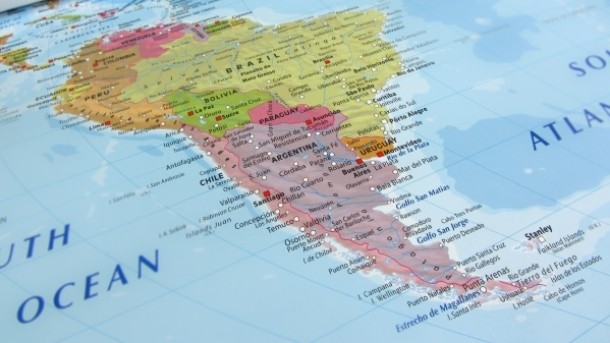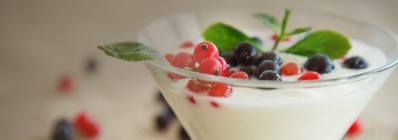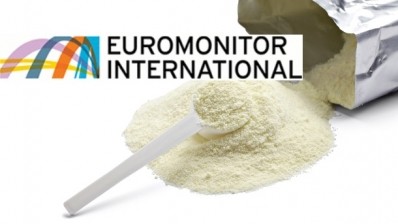Top 5 things to watch for in South American dairy in the rest of 2016

Between weather complications, low milk prices, and economic obstacles, this year has been one that regional dairy industry stakeholders would like to forget.
However, following a very challenging few months, it appears that balance is slowly being restored. Overall, milk volumes have been contracting, indicating some resolution of the oversupply issue.
In response, milk prices have hesitantly crept upwards in most countries, providing welcome relief for many in the dairy industry.
Everyone wants to know exactly when recovery will occur. Most foresee the global industry improving through the end of this year and into 2017, and these expectations are being applied to South America, in particular.
However, it is difficult to predict precisely when the scales will tip. To help provide clues to the question of the moment, the following are five statistics that we are closely tracking.
1. Argentina’s producer and consumer price gap
Argentina elected a new president in late 2015, ending 12 consecutive years of populist rule in the country. Since his installation, the new president, Mauricio Macri, has aggressively implemented a sweeping range of political and economic reforms. As a result, the country is awkwardly catching up with itself in what economics specialists at FocusEconomics call ‘a painful but necessary economic adjustment.’
Even though inflation was already rampant in Argentina, the removal of certain subsidies and price protections has led to a rapid rise in the prices of both consumer goods and production inputs. At the grocery store, milk now costs over $20 Argentine Pesos ($1.33) per liter, an increase of more than 15% compared to January. However, farmers are far from enjoying the trickle down of these higher consumer prices, with farm gate milk currently valued at about $4 ARS ($0.27) per liter.
Although it is tempting to conclude that this ever widening gap is caused by industry and retailers grabbing a larger share of the pie, data shows that the percent of value absorbed by each stage of the value chain has stayed relatively constant. In fact, processors in particular are suffering, with many key dairy companies taking measures, such as selling certain business units, in an attempt to stem their losses.
Nevertheless, this gap is a political flashpoint that is being watched closely by the industry. Should this gap grow, we can expect the industry to react dramatically, perhaps going so far as employing such tactics as protests that will block access to factories and stores. Such a disruption could prove to be deeply damaging to an industry that is struggling to find its footing.
2. Uruguay’s dairy cow slaughter
One of the questions I am most frequently asked is whether the drop we are seeing in South American milk production is due to structural factors, such as a reduction in the milking herd, or non-structural factors, such as management decisions. In most cases, the determination is based on a collection of anecdotal evidence, gathered from observations and industry participants. However, in Uruguay the government publishes dairy cow slaughter information, providing an important insight into the changing landscape of milk production in this small, but important, country.
So far this year, the statistics show that dairy cow slaughter has risen dramatically. Through July, 67,000 cows had been culled, an increase of 7.6% over the same period in 2015. From this information we can conclude that farmers have truly been reducing the sizes of their herds, knowledge that is echoed by information we are hearing from people in the field.
However, one important component of slaughter data is timing. While the year to date numbers certainly show a meaningful rise over last year, it will be critical to continue tracking this statistic to determine whether or not the high numbers we have seen so far are really marginal increases or simply an acceleration of the normal activity. In the case of the former, we would expect milk volumes to be lower for the coming year until the stock regenerates in accordance with market signals.
3. Brazil’s corn crop
There has been a lot of conversation this year about the corn crop in Brazil, and in particular from the dairy and livestock sectors. An extremely tight corn crop has led local prices to skyrocket, greatly increasing input costs and challenging dairymen’s profitability – even as they enjoy the highest milk prices in the region by far.
What started out as a crop production season with record expectations was repeatedly dampened by extreme weather, especially dryness, which robbed the crop of its growth potential. In addition, a relatively cheap Brazilian Real made their production affordable for global buyers and led to a dramatic increase in exports. Combined, these factors resulted in historically small stocks, pushing prices for local physical product higher and higher.
Current estimates for the Brazilian corn crop are 68.47 million metric tons, down almost 20% compared to last year. At this point, there is little that can be done for this year’s crop. However, September will mark the beginning of the new crop production year and corn planting will begin in the Southern region of Brazil. We will be watching closely to see how the crop develops. If the corn crop develops according to plan, we can expect that it will give producers some breathing room. However, if any complications emerge, it will squeeze farmer margins even further and likely lead to additional drops in milk production.
4. Likelihood of La Niña
Over the past year or so, we have been hearing a lot about the El Niño phenomenon and its projected impact on agriculture in the region. Currently, evolving weather patterns have shifted this year’s conversation to be about La Niña. According to the National Oceanic and Atmospheric Association of the United States (NOAA), La Niña is the climatic weather phenomenon caused by cooling in parts of the Pacific Ocean. A La Niña typically results in dryer than average weather across many agricultural and dairying regions of South America, including those in Brazil, Argentina, and Uruguay.
In its analysis released on August 11, 2016, NOAA forecasts that ‘La Niña is slightly favored to develop during August-October 2016, with about a 55-60% chance of La Niña during the fall and winter 2016-2017.’ While this forecast represents a reduced probability of the phenomenon compared to earlier reports, it is still an important indication that the region should be prepared to deal with the impacts resulting from such a weather event.
Although overly dry weather is of course not welcome anywhere, the development of such a phenomenon is particularly threatening in Brazil, which has already suffered from dry weather this year. Another year without rain could have a tremendous impact on both crop development and the dairy industry in the country. We will be watching the development of La Niña closely to help understand what lies ahead next year.
5. Global whole milk powder price
While each country in Latin America has its own mix of domestic and international demand, for many countries, global markets play an important role in the viability of the local dairy industry. For those countries that are export oriented, one of the most important products is whole milk powder (WMP). As a result, the international price level of WMP has an important influence on the well being of the dairy industry in Latin America.
The results of the most recent Global Dairy Trade auction were widely celebrated in the region, and the 18.9% increase in WMP was particularly cheered. Reports are mixed about just how much powder is sitting in storage, waiting for improved prices to be released onto global markets. The coming weeks will show if additional powder volumes come out of the woodwork, putting a damper on global prices.
However, if these gains are sustained in future events, it will provide important support to the regional industry that has struggled to find commodity price levels that are sustainable for each step of the value chain.
Latin America is a dynamic, exciting region and its dairy markets are no exception. Though times have been tough, there is reason to believe that hope is on the horizon. As we continue to track the recovery of these markets, the five factors we discussed here will offer important clues about how fast and to what extent we can expect the markets to improve.
Monica Ganley is the Principal of Quarterra, a boutique strategy consulting firm dedicated to helping their clients understand and unlock the food and agriculture industries of Latin America. To learn more, visit their website and blog at www.quarterra.com or get in touch directly at zbavpn.tnayrl@dhnegreen.pbz








